This piece is part of the Taiwan-U.S. Quarterly Analysis series, which features the original writings of experts from the United States and Taiwan, with the goal of providing a range of perspectives on developments relating to Taiwan.
To many observers, both in Taiwan and elsewhere, Taiwan is a multi-faceted success story. Thirty years after democratization, Taiwan has shown that a Chinese democracy can govern effectively, and a high-income economy can continue to grow even as the world suffers from a severe pandemic.
Taiwan has managed the spread of COVID-19 far better than most: It suffered only seven deaths among its 23.5 million people in 2020. Except for a few short weeks of soft lockdown in March last year, life in Taiwan has been normal. Schools, offices, and restaurants have been open as usual, although with temperature screening, hand sanitizing, and social distancing. Live concerts by Yo-Yo Ma and performances of “Phantom of the Opera” have attracted thousands of people into indoor arenas. Taiwan’s ability to fight COVID-19 illustrates its excellent public health infrastructure and health policy expertise, supported by extensive data and digital technology. Taiwanese people have also demonstrated a high level of trust toward both their government and their fellow citizens, applying lessons learned fighting the SARS pandemic in 2003 to prevent the spread of this latest virus.
With COVID-19 effectively contained and economic activity uninterrupted, Taiwan’s economy grew over 3% last year — higher than its neighbors Japan, Singapore, and Hong Kong, which all declined 5% or more. Despite a weak global economy, Taiwan enjoyed record exports thanks to surging global demand for its technology components and products because of the need to work and study from home. Taiwan is home to the world’s leading semiconductor industry, feeding an insatiable market for the most advanced chips for automobiles, 5G, and smart devices. When other export-oriented countries suffered from the decoupling of U.S.-China relations, Taiwan’s economy actually benefited, with Taiwan’s technology companies emerging as global leaders in digitization. Taiwan’s GDP growth forecast for 2021 is the highest in seven years.
In short, Taiwan has become a poster child for economic resilience and good public health. But what has been a success story so far may be only a fine line away from calamity because of Taiwan’s overreliance on China and its relatively weak connections with the rest of the world.
Concentration on the technology sector and the Chinese market poses risks
China is, of course, a natural trade and investment partner for Taiwan, given its common language and culture, its proximity, and the attraction of its lower wages and large market. Nonetheless, dependence poses risks for all of China’s trade partners, as the U.S. trade war with China has shown and as China uses economic dependence for political leverage. It is therefore wise for Taiwan to diversify its commercial relationships.
Taiwan has episodically tried to do so, first under former Present Lee Teng-hui’s “Go South” policy in 1993 and now under current President Tsai Ing-wen’s “New Southbound Policy” since 2016. Both policies tried to steer Taiwanese trade and investment away from China and back to Taiwan or to Southeast Asia. Due to rising costs in China and the U.S.-China trade war, Taiwanese investments in China have indeed declined. However, trade with China keeps growing, reaching the highest point in the 40 years since economic relations across the Taiwan Strait resumed. China and Hong Kong combined now represent 34% of Taiwan’s overall trade, compared with 13% with the United States and 11% with Japan. Despite policy incentives, the Association of Southeast Asian Nations’ (ASEAN) share of Taiwan’s total trade volume has actually dropped from 16% in 2017 to 14% today.
Taiwan’s continued dependence on China is partly due to the fact that China was the only major economy to rebound from the pandemic and expand in 2020. It is projected to grow 8% this year, according to the World Bank. Although they may resist, young Taiwanese looking for work may find China to be one of their best options, and Taiwanese exporters will likely remain tied to China.
Just as the destinations of Taiwan’s exports are geographically concentrated, so too are the sectors from which they come. Most of Taiwan’s impressive export growth is from the information and communication technology sector, with little from textiles, agriculture, small and medium businesses, or traditional manufacturing, all of which remain important parts of the Taiwanese economy. Workers in Taiwanese technology titans are working overtime and receiving huge year-end bonuses, while the rest of Taiwan continues to face the wage stagnation that has persisted since 2000. Unemployment for the youngest group is 12%, three times the national average. In the travel industry, Taiwan has spent the last few years diversifying away from China and welcomed nearly 12 million visitors in 2019, even after Beijing reduced Chinese tourists going to Taiwan. But as a result of the pandemic, the number of overall visitors to Taiwan declined by 88% in 2020, crippling its hospitality sector.
And within the technology sector, the oversized role of the semiconductor industry carries high risks. Taiwan’s semiconductors are key to the ambitions of Washington and Beijing in advanced technologies ranging from self-driving cars to artificial intelligence to 5G telecommunications. But making products attractive to both superpowers may not be as enviable as it appears. A recent report from the U.S. National Security Commission on Artificial Intelligence expressed concern about American overreliance on Taiwan, warning that the United States must try to onshore semiconductor production to manage risks and ensure supply. China is also investing heavily in indigenous production of integrated circuits to become more self-sufficient, as stated in its “Vision 2035” development strategy. If and when China gains ground and reduces its dependence on Taiwanese chips, it will not only buy less from Taiwan, but may also become a competitor for Taiwanese firms, eventually even including the flagship Taiwan Semiconductor Manufacturing Company.
Taiwan’s failure to more fully diversify its trade and investment partners has several causes. Despite spectacular reports to the contrary, in reality little is the result of Chinese interference in potential export markets. Larger problems include the low level of internationalization of Taiwanese society and its business community. Moreover, China’s natural gravitational pull is so large that it is still an easier source of growth than trying to find new markets elsewhere.
Overreliance on China exacerbated by strained cross-strait relations
The risks from Taiwan’s continued economic dependence on China are exacerbated by the strained political relationship between Taiwan and the mainland. After Taiwan democratized, it developed a different set of political and civic values from those in China. Now only 1% of Taiwanese people support immediate unification with the mainland, and Xi Jinping’s goal of unification with Taiwan within his lifetime appears increasingly elusive.
Moreover, in January 2019, Xi announced that, after unification, Taiwan would be governed by the same “one country, two systems” formula that was put in place when Hong Kong returned to Chinese sovereignty in 1997. Despite Beijing’s promise to keep Hong Kong’s political and economic systems largely unchanged, it has been trying to increase the economic and political influence of the mainland and to ensure both that young Hong Kongers are educated to become more patriotic and that older Hong Kongers selected for government positions can be trusted to act as “patriots.” Faced with widespread protests in Hong Kong since 2016, China has used the police and the judiciary to implement a national security law to end the protests and completely expel pro-democracy individuals from positions in government. The recent National People’s Congress annual meeting in China announced reforms to Hong Kong’s electoral system that signal an end to truly contested elections by requiring that all candidates be vetted by a government selection committee.
These developments have made Taiwanese people resist unification even more. In response, Beijing has shown an increasing willingness both to use threats of military force and to weaponize Taiwan’s dependence on China to convince Taiwanese people that they have no choice but to acquiesce to Beijing’s terms. China has already demonstrated what some call a deliberate “QiongTai” (make Taiwan poor) strategy by reducing the level of Chinese tourism in Taiwan in 2016 and 2019, either to protest the results of a recent election or to influence the outcome of an upcoming one. Beijing also constantly harasses Taiwanese businesses in mainland China if they seem sympathetic to the Democratic Progressive Party, the current majority ruling party that Beijing has long accused of being pro-independence. Giving only three days’ notice, Beijing announced that all imports of Taiwanese pineapple would be banned as of March 1, allegedly on public health grounds, sending another sobering signal to Taiwanese people of their vulnerability to China’s coercive trade measures. While China has exerted similar economic pressure on Australia and South Korea, the stakes are even higher for Taiwan because China wants to subsume it politically. This has brought the cross-Strait political atmosphere to perhaps its lowest point since they resumed relations in the 1990s.
The risks for Taiwan from its strained relationship with China have also been evident in signs of fragility in Taiwan’s impressive resilience in healthcare, another key element in its success story. There has been no public discussion of using Chinese vaccines on Taiwan, and in any event, the Taiwanese are uninterested in receiving them. Excluded from the World Health Organization (WHO), Taiwan does not seem to have received much, if any, vaccine support through the COVID-19 Vaccines Global Access initiative. The government has not bid successfully for adequate doses of non-Chinese vaccines, although some will eventually arrive later in 2021. While Taiwan’s effective prevention measures may halt any upsurge in infection even without vaccines, Taiwanese people risk being trapped on the island with few visitors coming in and greater difficulties going out, while the rest of the world starts traveling again. This may affect Taiwan’s economic prospects and also reduce confidence among the Taiwan public.
Solutions for Taiwan’s domestic problems urgently needed
All this puts Taiwan in a grim position. It has successfully escaped the middle-income trap that has plagued many emerging economies, with its political system democratized, high-value-added technology industries nurtured, and levels of economic inequality reduced. But it is falling into a high-income trap, characterized by demographic decline, greater inequality, and growing polarization. With lower fertility and improved longevity, the island’s population started declining in 2020 and Taiwan will see its workforce reduced by half, to 8.6 million people, around 2065. The situation is exacerbated by the accommodative monetary policy adopted worldwide to address first the global financial crisis and now the pandemic, which have fueled asset inflation and housing prices. According to Taiwan’s Central Bank, household debt as a percentage of GDP has reached 86.7% in 2019, much higher than the global average. While older generations enjoy entitlements and are asset-rich, young people are relying either on debt or support from their families for a longer period of time. Accordingly, generational and rural-urban inequality will continue to widen, just like in the U.S. and Europe.
Taiwan is searching for solutions to its high-income trap and ways to address the decline of its middle class. China appears to be an answer but may also prove to be a danger. Increased Chinese influence may give it the opportunity to undermine the institutions that are key to the success of democracy. Just this month, two chip design companies in Taiwan indirectly owned by a Chinese cryptocurrency firm have been charged with poaching hundreds of Taiwanese engineers to work in China. In addition to hacking to steal sensitive information and potentially to disrupt critical infrastructure, China also uses social media, influence over traditional media companies, and intimidation of Taiwanese companies with China exposure to gain an invisible hold over all of Taiwan.
As Taiwan’s interest in unification collapses, Beijing has increasingly concluded that the process is likely to be involuntary, whether peaceful or not. This makes Taiwan a potential flashpoint as the People’s Liberation Army increases its ability both to attack Taiwan and to deter the United States from coming to the island’s defense. But the restriction of Taiwan’s international space and the use of political warfare and economic coercion are even bigger dangers than outright military assault.
For Taiwan’s success story to be sustainable, Taiwan must retain its leadership position in semiconductors, diversify its economy so that a broader segment of society enjoys its success, and strengthen its relations with more economic partners. To advance these goals, the United States and Taiwan need to reach a bilateral trade agreement, especially given that President Tsai has expended much of her political capital to allow the American pork and beef imports that had been the American precondition for achieving it.
Taiwan must also become more fully integrated into the international community, including joining the WHO to prepare for the next pandemic and becoming part of the Comprehensive and Progressive Agreement for Trans-Pacific Partnership to prepare for changes in the global supply chain. Taiwan’s path toward a sustainable economic future depends not only on a capable government, a hardworking population, and a more global outlook, but also on the support of the international community. Taiwan cannot resist the gravitational pull of the Chinese economy unless like-minded democracies, which may all eventually face their own versions of Taiwan’s China dilemma, make a concerted effort to work together to protect Taiwan’s autonomy and prosperity.
-
Acknowledgements and disclosures
Adrien Chorn assisted with editing this piece.
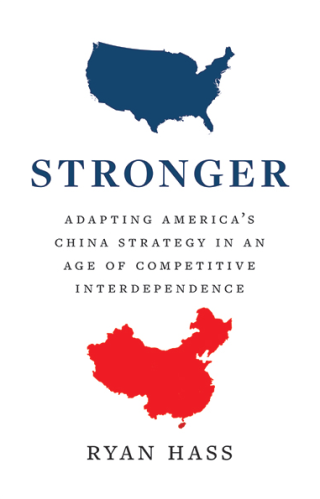
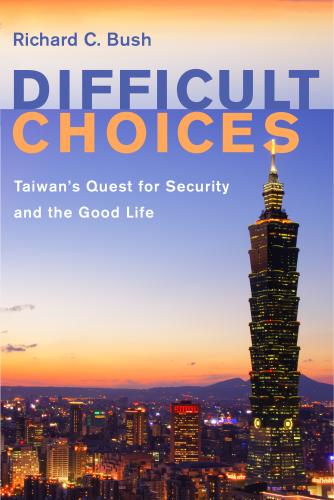
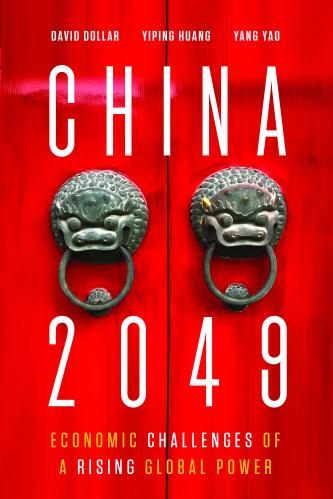
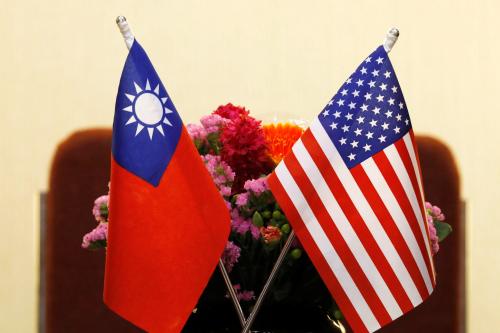
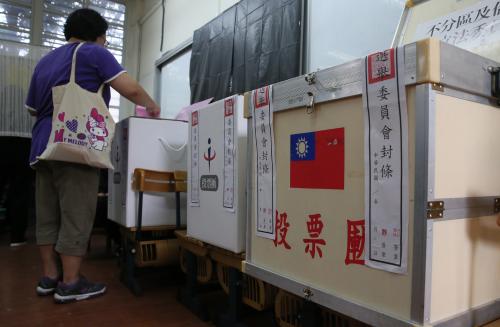
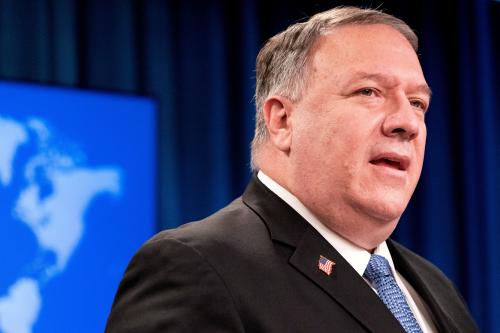

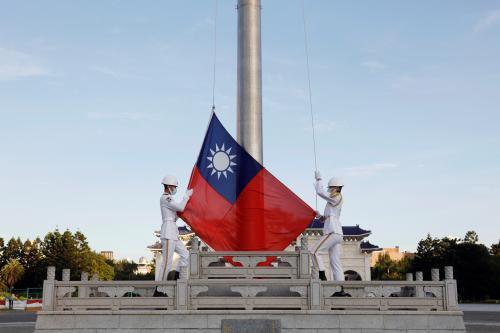
Commentary
Taiwan’s continued success requires economic diversification of products and markets
March 15, 2021